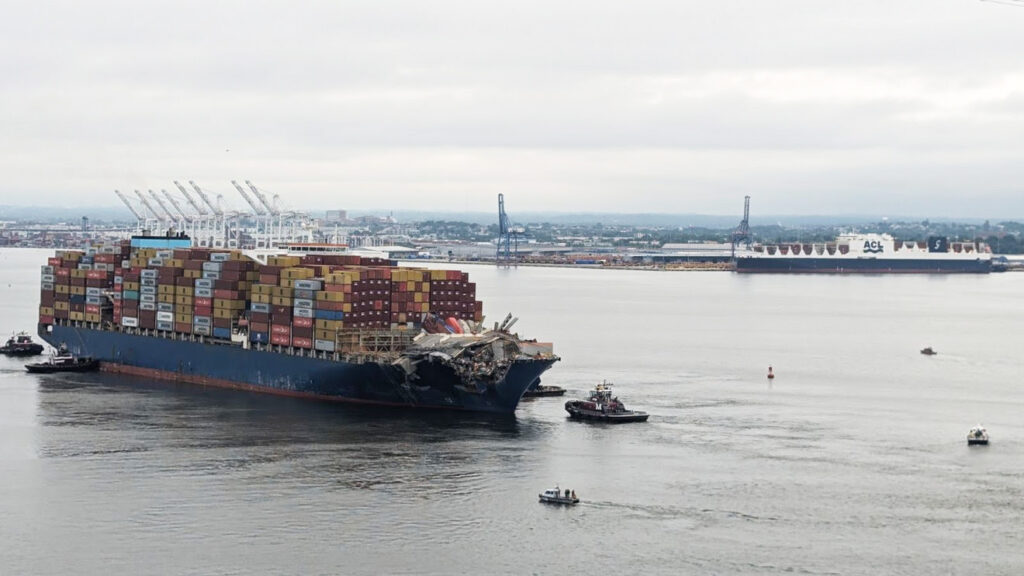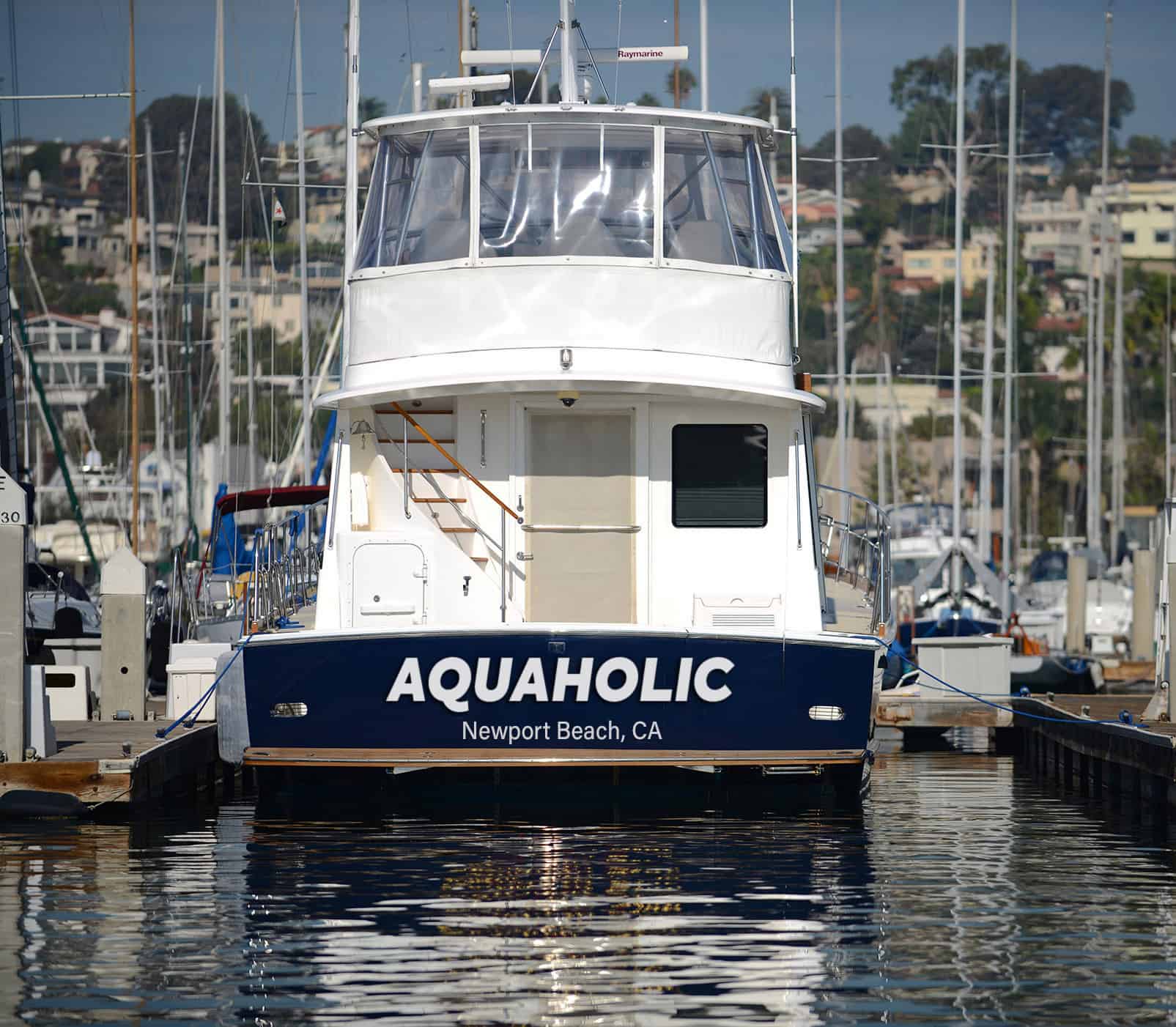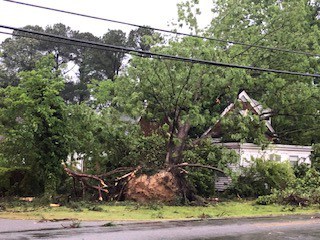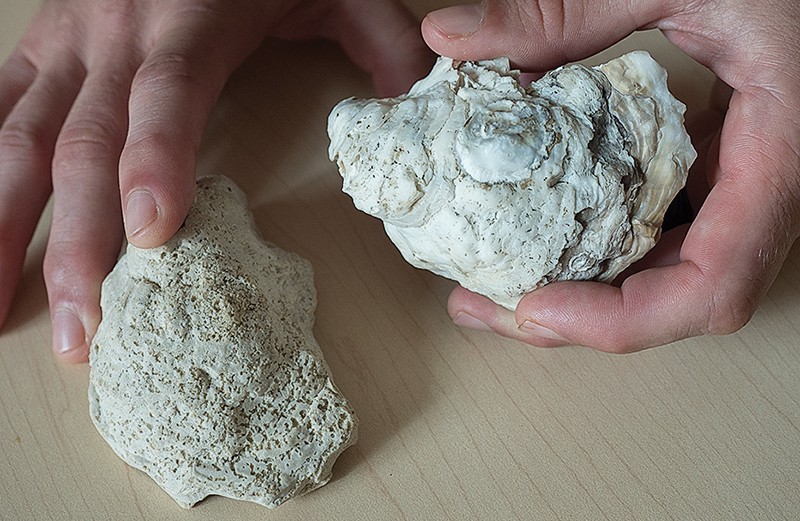For the first time in nearly two months, there is no wrecked container ship in the middle of the Patapsco River, blocking full passage of ships calling on the Port of Baltimore.
In a milestone moment, the Singapore-flagged M/V Dali was carefully refloated just before 7 a.m. Monday and towed to a marine terminal at the port. The trip was slow and controlled, as the Dali traveled at roughly 1 mile per hour to its destination, reaching the berth around 9 a.m.
Here’s a sped up, time-lapse version from the U.S. Army Corps of Engineers:
To onlookers at a distance, the tow operation looked smooth and predictable. To get it that way took nearly a full day of preparation. First, an 18-hour countdown began midday on Sunday in which crews released anchors and mooring lines with tugboats on standby. Then, 1.25 million gallons of ballast water, which was pumped onto the ship during the precision cutting bridge removal, had to be taken off the Dali. Finally, Unified Command dive survey teams inspected the port side of the ship to be sure all obstructions had been removed.
The Key Bridge Response Unified Command targeted the morning’s high tide, beginning to prepare the vessel at 2 a.m. When it became buoyant again, five tugboats were on hand to tow/push the Dali the 2.5 miles to its current berth at the Port of Baltimore.
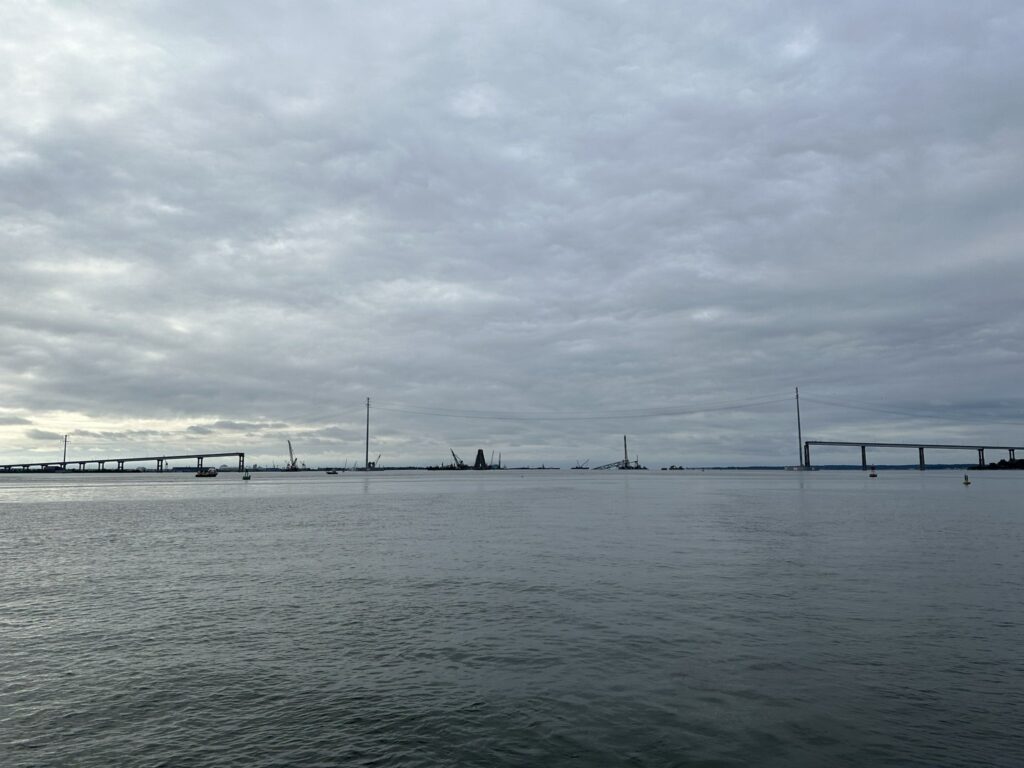
Maryland Governor Wes Moore called the removal of the Dali “an enormous step forward in our mission to recover from the collapse.”
The governor noted the action that has taken place in the seven weeks since the ship crashed into the Key Bridge, causing it to collapse on March 26. “We have recovered all six individuals who lost their lives, enacted bipartisan legislation to support workers and businesses, and, as of today, successfully refloated the Dali.”
Unified Command is still targeting the end of the month for reopening the full Baltimore channel, enabling it to serve even the largest ships that call on the port. In a joint statement, Unified Command leaders said, “We won’t slow down until the channel is fully restored.”
The operational width of the federal channel will begin at 400 feet wide and 50 feet deep. As soon as all steel below the mudline is removed, the federal channel will return to its original width of 700 feet.
Moore said Monday, “Our work isn’t done. We must continue to move in partnership with all key stakeholders… to clear the full 700 foot federal channel, support our people, including the workers, businesses, and families affected by the collapse, and rebuild the Francis Scott Key Bridge. And with this team, I know that we will.”
In another sign of progress, the first large commercial cruise since the disaster will sail out of the Maryland Cruise Terminal in Baltimore this week. Royal Caribbean announced its Vision of the Seas five-night cruise to Bermuda will sail from Baltimore on May 25, making it the first cruise to depart Baltimore since the bridge collapse. Ten cruises had to be moved to Norfolk’s Half Moone Cruise Terminal during the salvage operation.
The Port of Baltimore tells Chesapeake Bay Magazine that they’re still finalizing plans for upcoming Carnival cruises that were set to depart Baltimore.

